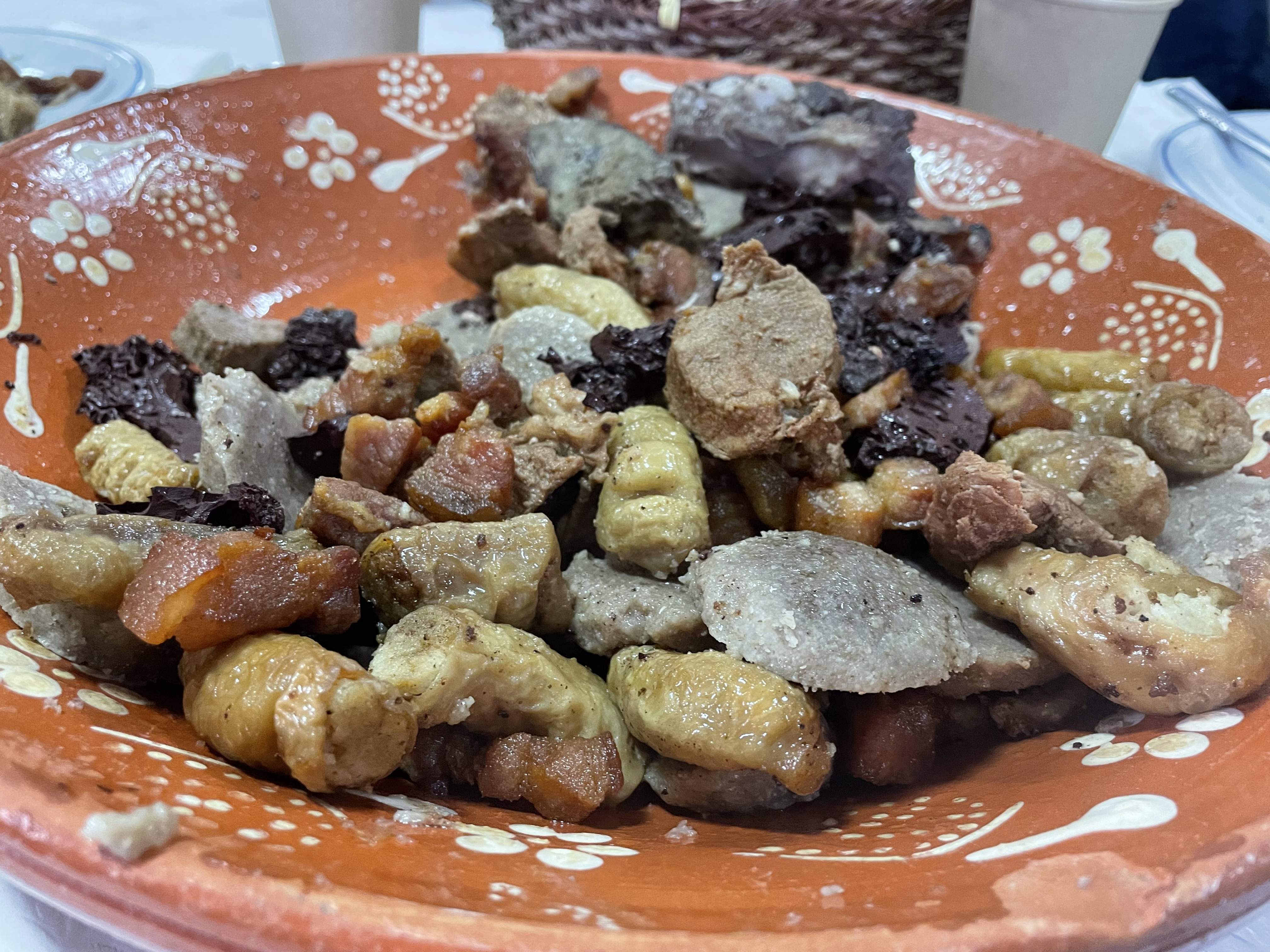2023 Portugal Daily Update

Unveiling the Origins and Significance of Arroz de Sarabulho
Arroz de Sarabulho, a traditional Portuguese pork rice stew, has a rich history and cultural significance that dates back centuries. This beloved dish originated in the Minho region of Portugal, known for its agricultural heritage and flavorful cuisine. The name "Sarabulho" is derived from the Arabic word "sara," meaning blood, which refers to the use of pig's blood as one of the key ingredients in this dish.
Arroz de Sarabulho holds a special place in Portuguese culinary traditions, often prepared during festive occasions and family gatherings. It represents the country's deep-rooted connection to agriculture and showcases the resourcefulness of using every part of an animal. The combination of tender pork meat, aromatic spices, and hearty rice creates a harmonious blend of flavors that delights both locals and visitors alike.
Intrigued by its origins and eager to explore its historical significance? Let's delve deeper into the fascinating story behind Arroz de Sarabulho and uncover its secrets!
A Glimpse into Portuguese Cuisine
Portuguese cuisine is a treasure trove of flavors, influenced by its rich history and diverse cultural heritage. The culinary traditions of Portugal reflect the country's close relationship with the sea, its agricultural abundance, and the fusion of different cultures over centuries.
Portuguese Culinary Heritage
The culinary traditions of Portugal are deeply rooted in its history as a seafaring nation. With a strong emphasis on fresh ingredients, Portuguese cuisine celebrates the bounties of the land and sea. Olive oil, garlic, onions, and an array of aromatic herbs are commonly used to enhance the flavors of dishes.
Portugal's geographical location has also played a significant role in shaping its culinary heritage. The country enjoys a Mediterranean climate, making it ideal for cultivating vineyards and olive groves. This has contributed to the production of high-quality wines and olive oils that are integral to Portuguese cuisine.
Traditional Portuguese Dishes
Portugal boasts a wide range of traditional dishes that showcase its culinary prowess. From seafood delicacies like Bacalhau (salted codfish) dishes to hearty meat stews like Cozido à Portuguesa (Portuguese boiled dinner), each dish tells a story about the region it originates from.
One iconic dish is Caldo Verde, a comforting soup made with kale, potatoes, onions, and slices of chouriço (smoked sausage). Another popular dish is Pastéis de Nata, delicious custard tarts with crispy pastry shells that originated in Lisbon.
Food holds great cultural significance in Portuguese society. It brings people together during celebrations and family gatherings while preserving age-old traditions. Exploring traditional Portuguese dishes allows us to appreciate the country's rich gastronomic heritage and understand how food plays an integral role in shaping its identity.
Uncovering the Traditional Recipe
Arroz de Sarabulho is a dish that showcases the rich flavors of Portuguese cuisine. To prepare this traditional pork rice stew, you will need a combination of key ingredients and follow specific cooking techniques.
Ingredients and Preparation
The main ingredients for Arroz de Sarabulho include pork, rice, pig's blood, onions, garlic, bay leaves, paprika, and salt. The pork is typically cut into small pieces and marinated with garlic, paprika, and salt to enhance its flavor. The pig's blood adds a unique richness to the dish.
To start preparing Arroz de Sarabulho, sauté the onions and garlic in olive oil until they become translucent. Then add the marinated pork pieces and cook until they are browned. Next, incorporate the pig's blood into the mixture along with bay leaves and paprika. Allow it to simmer for a while to develop the flavors.
Once the base of the stew is ready, add water or broth along with rice. Cook everything together until the rice absorbs all the delicious flavors and becomes tender. The result is a hearty and flavorful dish that will tantalize your taste buds.
Cooking Techniques and Tips
To achieve the perfect texture and taste for Arroz de Sarabulho, it's important to follow a few cooking techniques:
Marinating: Marinating the pork in garlic, paprika, and salt helps infuse it with flavor before cooking.
Browning: Browning the pork before adding other ingredients enhances its taste by creating caramelization.
Simmering: Allowing the stew to simmer slowly on low heat helps meld all the flavors together.
Rice Absorption: Ensure that you use an appropriate ratio of liquid to rice so that it absorbs all the flavors without becoming mushy.
For an extra touch of flavor, you can garnish Arroz de Sarabulho with fresh parsley or cilantro before serving. Experimenting with different variations and adjusting the seasonings to your taste preferences can make this traditional dish truly your own.

Variations and Enjoying Arroz de Sarabulho
Arroz de Sarabulho may have its traditional recipe, but like many beloved dishes, it also has regional variations that add unique twists to the flavors. Let's explore how different regions in Portugal put their spin on this delightful pork rice stew.
Regional Variations
In the Minho region, where Arroz de Sarabulho originated, some variations include adding liver or chorizo to the stew for added richness and depth of flavor. In other regions, you may find variations that incorporate regional ingredients such as local sausages or vegetables.
The influence of regional ingredients and flavors is what makes each variation special. Coastal regions might use seafood instead of pork to create a seafood rice stew with similar techniques. Exploring these regional variations allows you to experience the diverse culinary landscape of Portugal.
Pairing and Serving Suggestions
When it comes to enjoying Arroz de Sarabulho, there are a few pairing and serving suggestions that can elevate your dining experience. Portuguese cuisine is known for its excellent wines, so consider pairing this dish with a robust red wine such as Douro or Alentejo. The rich flavors of the stew complement the boldness of these wines.
To enhance the presentation and taste, garnish your Arroz de Sarabulho with fresh herbs like parsley or cilantro before serving. Additionally, serve it alongside traditional Portuguese bread or cornbread to soak up all the delicious juices.
For a complete meal, consider serving Arroz de Sarabulho with a side salad or steamed vegetables to add freshness and balance to the dish. These additions provide a contrast in textures while incorporating more nutritional elements into your meal.
By exploring regional variations and experimenting with pairings and serving suggestions, you can create an enjoyable dining experience that celebrates the rich history and flavors of Arroz de Sarabulho.
Embrace the Flavors and History of Arroz de Sarabulho
Arroz de Sarabulho is more than just a dish; it represents the cultural heritage and culinary traditions of Portugal. By appreciating its flavors and history, you can truly immerse yourself in the vibrant tapestry of Portuguese cuisine.
The rich and savory flavors of Arroz de Sarabulho, combined with its historical significance, make it a must-try for food enthusiasts and culinary explorers. So why not embrace this delightful dish by trying out the traditional recipe? Savor each bite as you experience the unique blend of spices, tender pork, and hearty rice.
As you enjoy Arroz de Sarabulho, take a moment to reflect on its place in Portuguese culinary heritage. Let yourself be transported back in time, imagining generations before you who have savored this dish. By embracing the flavors and history of Arroz de Sarabulho, you become part of a timeless tradition that celebrates the artistry and passion behind Portuguese cuisine.
See Also
Exploring the Incredible Advantages of Creme de Mãos Alantoíne (advertorial)
Uncovering the Splendorous Santuário de Santa Luzia in Viana do Castelo
Unraveling the Past and Influence of Mocidade Portuguesa
Revealing the Captivating Bacalhôa: An Expedition into Wine, Art, and History
Examining the Portuguese Empire and Its Impact on Global History
